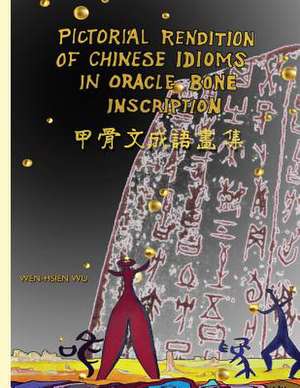Pictorial Rendition of Chinese Idioms in Oracle Bone Inscription
Autor Wen-Hsien Wuen Limba Engleză Paperback
Preț: 109.47 lei
Nou
Puncte Express: 164
Preț estimativ în valută:
20.95€ • 21.64$ • 17.43£
20.95€ • 21.64$ • 17.43£
Carte indisponibilă temporar
Doresc să fiu notificat când acest titlu va fi disponibil:
Se trimite...
Preluare comenzi: 021 569.72.76
Specificații
ISBN-13: 9781625030740
ISBN-10: 1625030746
Pagini: 72
Dimensiuni: 216 x 279 x 5 mm
Greutate: 0.19 kg
Editura: Ehgbooks
ISBN-10: 1625030746
Pagini: 72
Dimensiuni: 216 x 279 x 5 mm
Greutate: 0.19 kg
Editura: Ehgbooks
